As an Amazon Associate I earn from qualifying purchases.
Brining olives is the oldest way to cure olives, especially green ones. What follows are instructions and troubleshooting on how to cure olives with a brine. There are other ways I’ll get to below.
This post assumes you have access to fresh, green olives off the tree, which are pretty but inedible — they are impossibly astringent. Olive trees can be found all over California, in many parts of Arizona, as well as Australia and, obviously, the Mediterranean, where they are native.
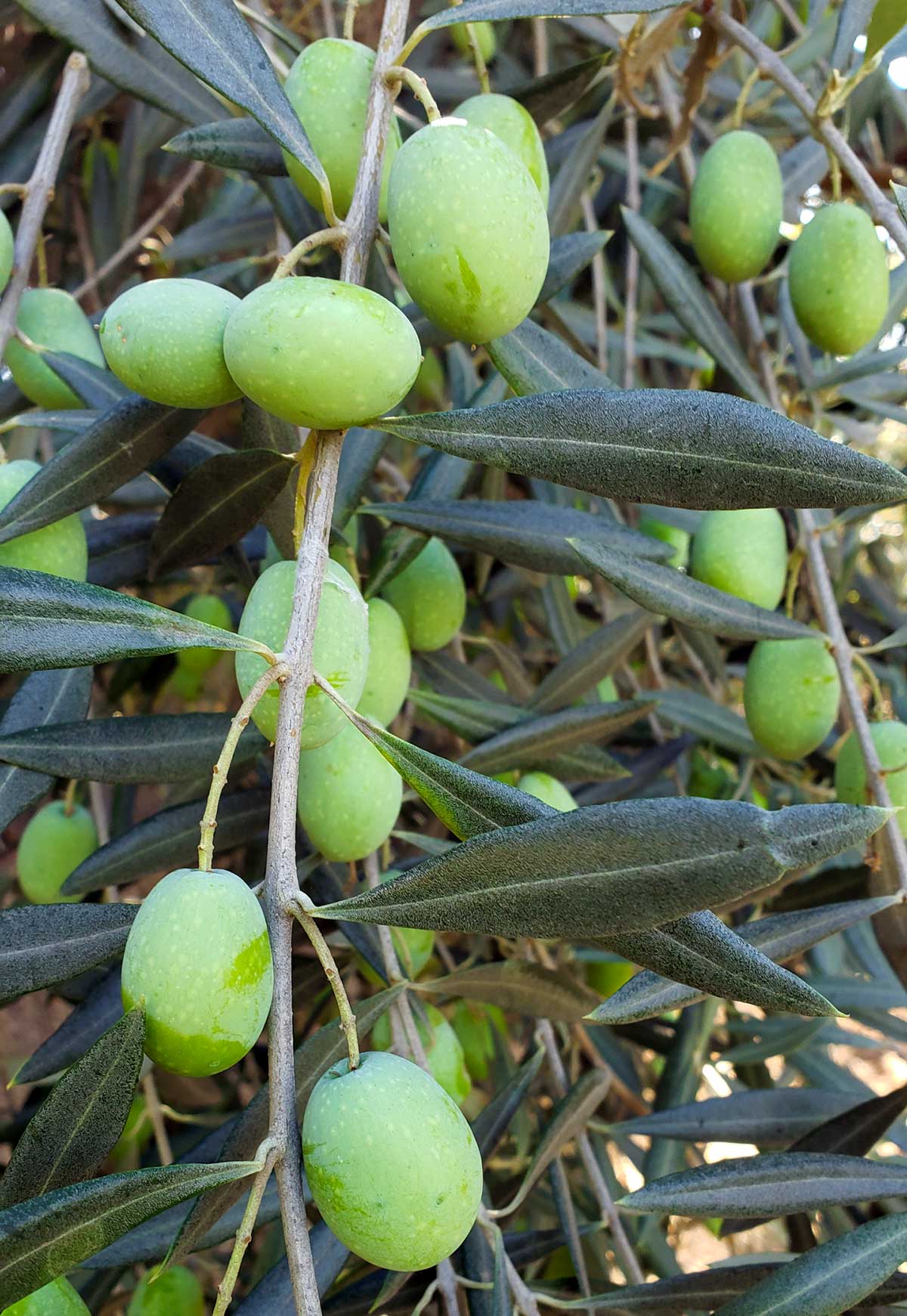
You can buy fresh olives online, and over the years I have provided links, but these companies seem to come and go quickly, so I don’t do that anymore. Just Google “buy fresh olives” around September here in the United States, and I think March in Australia.
The timing is important because you want fresh green olives. And yes, like peppers, all olives start green and ripen to another color, usually black in the case of olives.
Green, unripe olives are firmer and way more astringent than ripe ones. Brining olives when they are green is a great way to cure them, and green olives are the only olives suitable for what, admittedly, is my favorite cure, which a lye cured olive. That process, believe it or not, has been used for 2000 years, and is not as scary as it sounds.
You can brine ripe, black olives, too, just so you know.
My general rhythm is to cruise my local parks in late September or early October; they are full of olive trees, remnants of pre-suburbia orchards around here. On some crisp autumn Saturday, I go picking. Look for pretty olives, with few or no blemishes, and which are not wrinkled.
Tiny dots on an olive are OK, but many may be rotten with olive fly, whose larvae burrow into olives and leave a beige scar where they entered. that telltale scar means there is a visitor lurking within your olive.
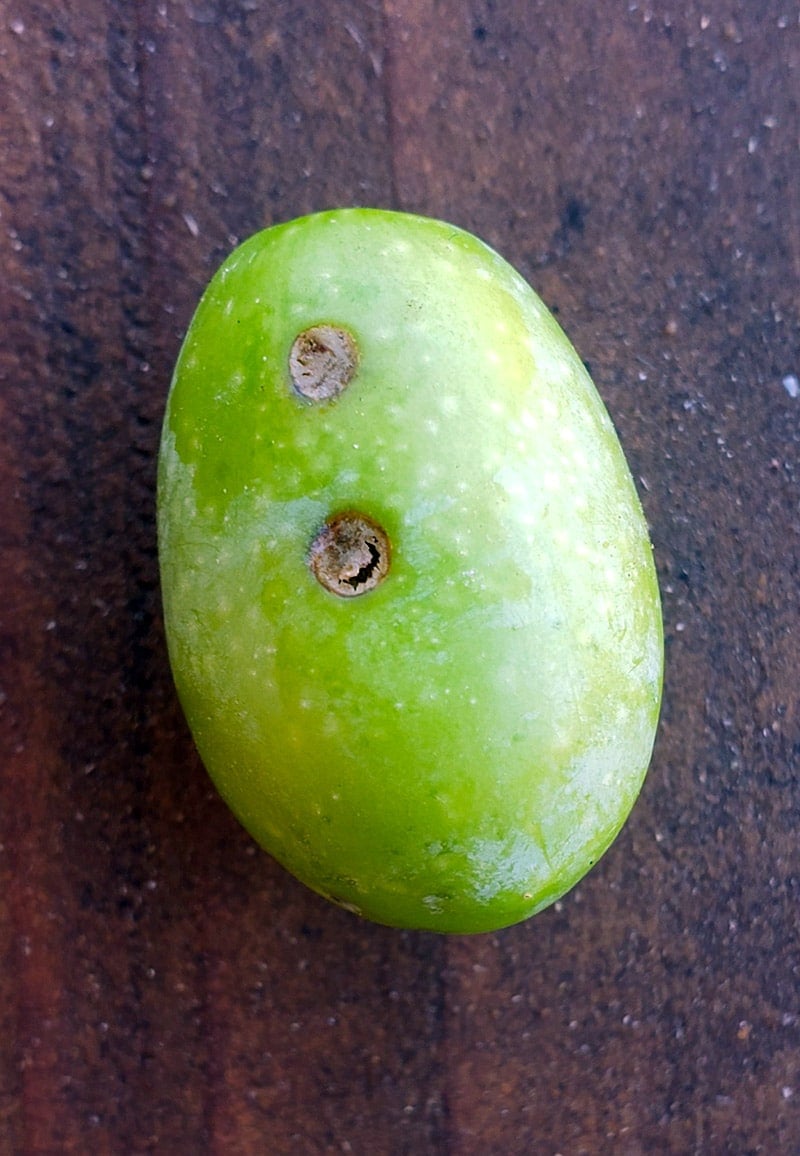
Another hazard are the dry olives. Trees forced to live by their own wits — away from regularly watered grass — are stressed, and their olives shrivel early. Shriveled olives are usable, but they bruise rapidly and don’t make a clean green olive.
When you get home, separate your olives into small, medium and large olives — it doesn’t matter what variety they are, as I don’t know how to tell the difference. If you don’t have enough large ones to make its own batch, mix them with the mediums.
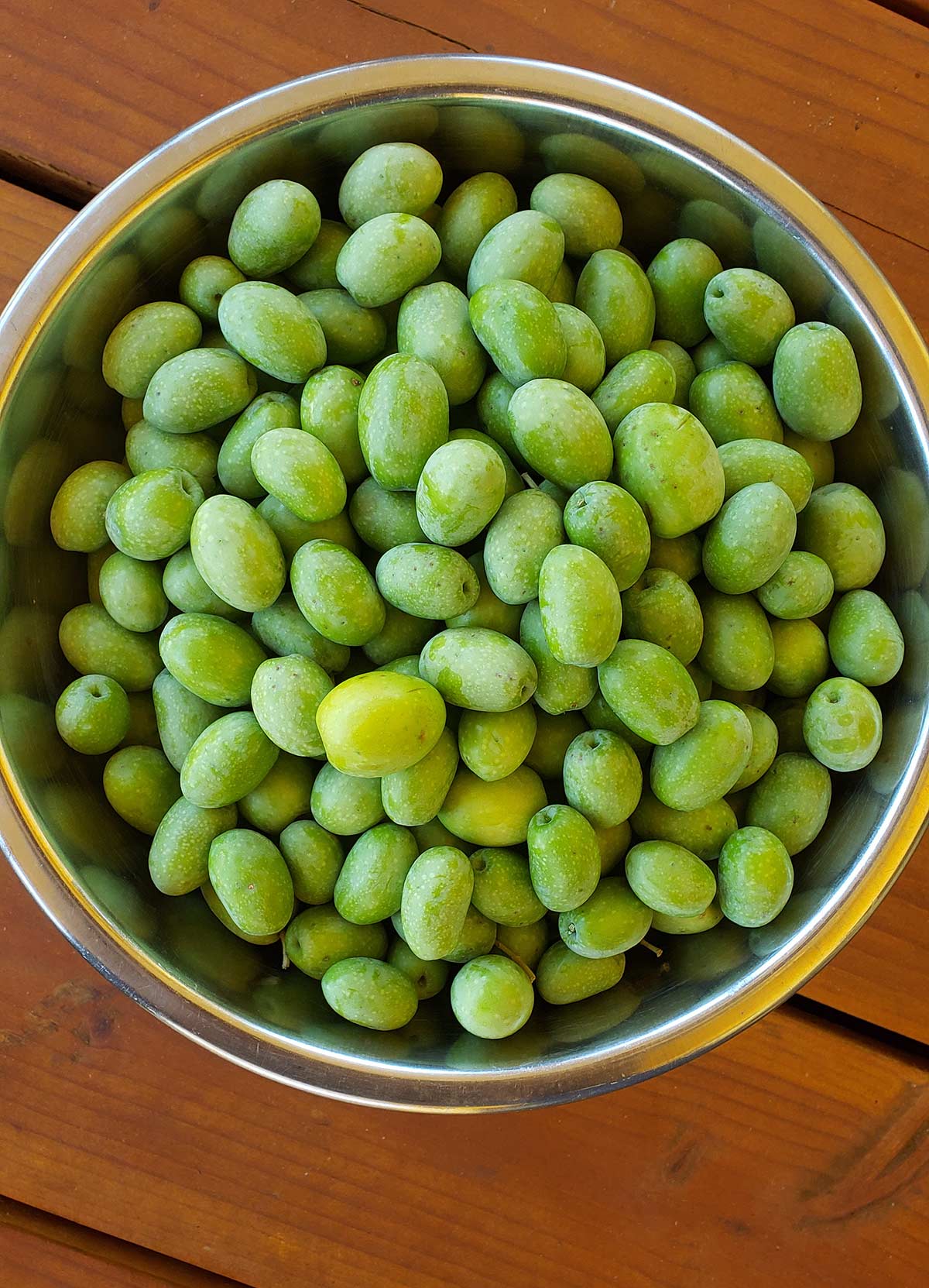
Unless I am doing the lye cure, brining olives is my preferred method, as it is low-maintenance and results in a super-tangy, salty olive that keeps for more than a year and cries out for beer or ouzo. And I like ouzo. A lot.
Brine-curing is easy, but takes a long time. You make a brine of 1/4 cup kosher salt (I use Diamond Crystal) to 4 cups water, plus 1/2 cup of vinegar: white wine, cider or simple white vinegar. Submerge the olives in this brine and top with cheesecloth or something else to keep them underwater. Do not cut them.
Cover the top of the container loosely (I use large, 1 gallon glass jars) and put the jar in a dark, cool place. That’s it. Check it from time to time — meaning every week or so at first. The brine should darken, and you might get a scum on the top. That’s OK.
What’s going on is that your olives are fermenting; it is the fermentation that breaks down the oleuropein over time. The what? Yeah, oleuropein is the astringent substance in an unripe olive. It needs to go if you are going to eat one. Fermentation is why I never wash my olives before curing — I want those natural yeasts on the outside of the olive to do their magic.
I change my brine every month or two, when it begins to look extra nasty. I don’t re-rinse the olives, during changes, either, because I want the residue to act as a “starter” to get the next batch of brine going.
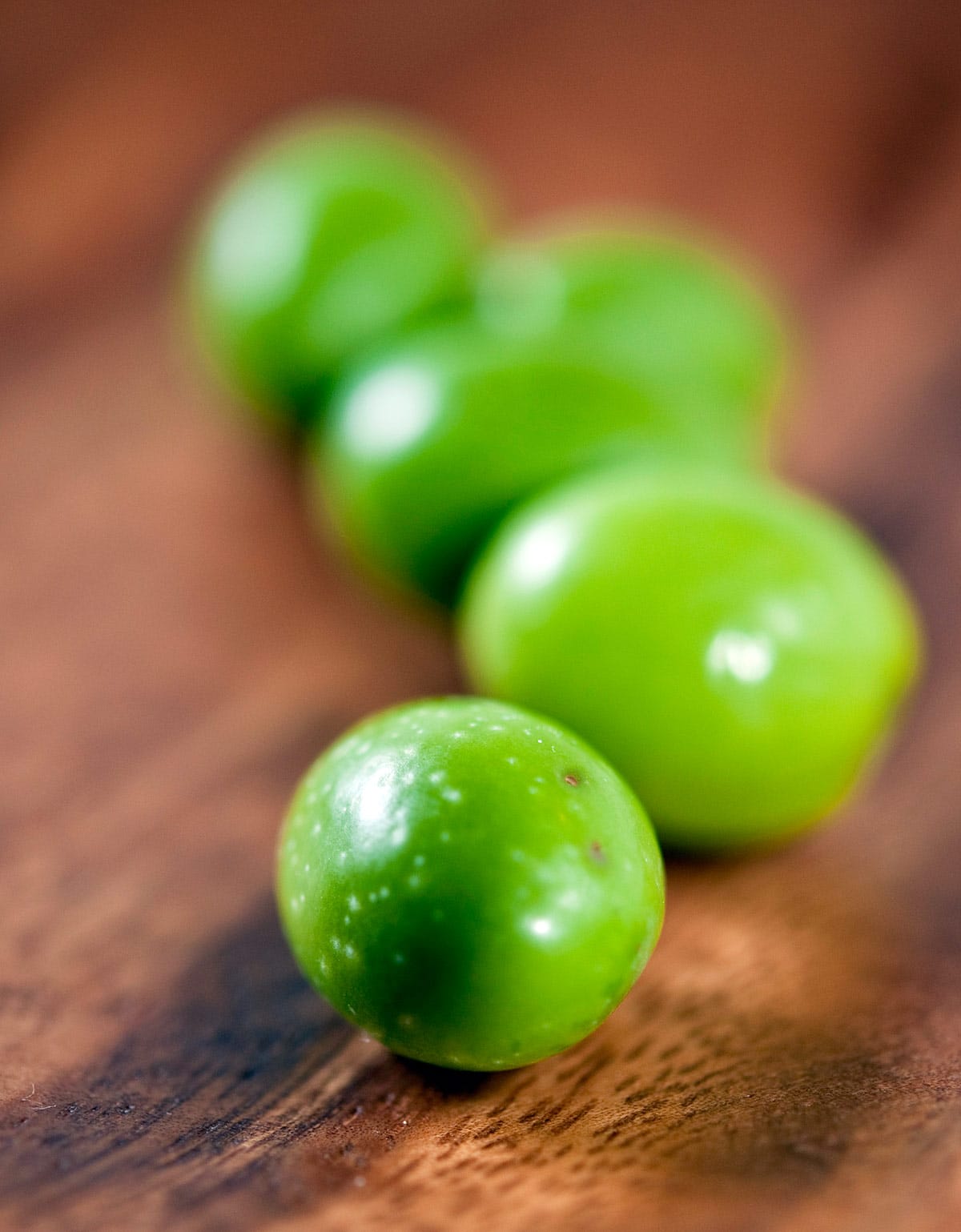
Keep in mind you will be in for the long haul: Olives picked in October are typically ready to eat in May or June. It’s a lot like making wine.
Add seasonings after the New Year, or even later, otherwise you risk too much spice and not enough olive flavor; this is especially true of chiles. If you find you’ve gone too far, change the brine and don’t add new seasonings, and let it steep for a few weeks. That should calm things down a bit.
Once the olives are finished, there is a certain show-off factor when you pull out a plate of olives you cured yourself. “These are your olives? Wow.” Plus, you can flavor them any way you like, which is a bonus.
If you’re too late for green olives, I really like salt cured black olives, which we all call oil-cured olives since that’s how they are stored. If you want to cure black olives, my method is to oil-cure olives.
Brine Cured Green Olives
Ingredients
- 4 pounds fresh green olives
- 1 cup kosher salt
- 1 gallon water
- 1 cup distilled vinegar
Instructions
- Assuming you've already checked your olives for worm scars (see headnotes), discard any with too many blemishes. Place the olives in a stoneware crock or large glass jar with a lid carefully. Fresh olives actually do bruise easily.
- Mix the vinegar, salt and water together. No need to boil, as it will dissolve at room temperature. Pour this over the olives, making sure they are submerged by at least 2 inches. Add more brine in the same ratio if need be.
- Chances are the olives will float. You need to keep them away from air, so I put a plate over them that is just about the size of the jar or crock. You can also use a plastic bag filled with water to keep the olives away from air. Once the olives are submerged, cover the jar or lid (lightly screw on the top if there is one) and place the container in a cool, dark place. A basement is ideal. You don't want them to ever get beyond 75°F if you can help it, because at higher temperatures the olives can go soft. Since this is a wintertime cure, it should not be a problem. Low temperatures are fine, just don't let them freeze. Let them sit for several months.
- As time passes, you will see a scum of mold and weirdness form on the top. This is normal. Skim it off once a week and you'll be fine. At some point the brine itself will get pretty icky. I like to change the brine every month or so, but this is not strictly needed. The olives are done when they are no longer bitter, anywhere from 2 to 4 months.
- Only now do you add other seasonings, like chile peppers, black peppercorns, herbs or citrus peel. Do this in a fresh brine, and let this new, flavorful brine sit 2 weeks before serving. Store the olives in this brine, in a cool place or refrigerator, for up to 2 years. I keep them in quart Mason jars.
Notes
Flavor Additions
- dried chiles
- bay leaves or similar aromatic leaves like citrus leaves
- thyme, sage, oregano, rosemary
- allspice, black peppercorns, juniper berries
- smashed garlic cloves
Nutrition
Nutrition information is automatically calculated, so should only be used as an approximation.

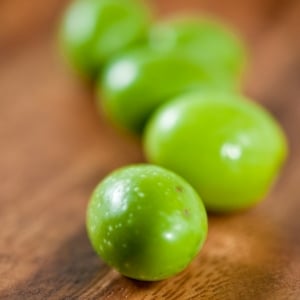




Mark: Until they taste good. Could be a couple days, could be a month. It depends on how ripe the olives were, how large they are, what they’re stored in, etc.
Hi, We are in the middle of attempting the water cure for a month. The directions say to start brining when the month is up. How long do we brine before the olives should be edible?
Hank: Just read your post from 11/30/09 where you answered my question above and recommend not slicing the olives for brine curing. Many thanks. 🙂
Hank: Thank you for the detailed info on curing olives. Quick question: do you make a small cut in the olives when you brine cure them they way you do for water curing them?
While I am at it, I have another question…I have cured 13# of olives. They are so yummy already, I now am ready for the final brining. Your article says now is the time to have fun with the spices…think Mediterranean…can you give me a rough guide of how much to use…for example whole garlic cloves? A cup? two? For 13 pounds of olives….how many peppercorns, a 1/4 cup? Half cup? Bay leaves? 25, 30?, 50? I plan to put a one foot long branch of rosemary, garlic, peppercorns, chili flakes, bay leaves in the brine….any suggestions? I have two gallons of brine for my beautiful olives…
Hey there!
I live in Jerusalem, Israel and have an olive tree in my yard. The olives are nice and big (an inch or so) and are green… then turn black (with purple juice) towards the end of the season and then fall off the tree by the hundreds. This year, I’d like to harvest them. When do you recommend I pick them? Also, these olives, if I pick them when still green, should I use the water-cure method above? And if so, when moving them to brine after the month of water-curing in the fridge, should I put them in the jars I plan to give them away in? Is this the end stage, or do I need to wait with them in brine for some amount of time before eating?
Thanks so much,
Naomi
Hi, I LOVE your blog and your suggestions and my lye-cured olives!! My question is how to store them after the second brining? In olive oil? I would like to avoid this as I love the freshness of the olives without the oil…Do I hot-water bath can them in glass jars? Can I store them in their brine in a crock in the basement? Do they need to be refrigerated? Thank you, Rhonda
Dennis: It’s not an exact science, but a quart of brine will be enough for 1-3 pounds of olives.
ANYBODY KNOW THE QUANTITY OF OLIVES (WEIGHT) AND THE DOSE OF WATER AND SALT
4CUPS OF WATER TO HOW MANY OLIVES????1KILO-2KILOS??
THANK YOU DENNIS
Megan: I keep the water-cured ones in the fridge, but I don’t see why they would not be good in a cool closet. I would split the batch and do a test.
Hank,
After the first month of changing the water daily, do the olives in the brine have to be kept in the fridge, or will a cool, dark closet do the trick?
Thanks! Just sliced, submerged, and refrigerated 3 gallons last night!
Megan
I have been watching them since they were small little buds in March, a majority are larger than a quarter. Not a lot are purple but more seem to be turning every day. There are ones with the holes on them that are rotted and within the last 2 weeks most have shrunk up like little raisins. But there are still a lot of very nice looking ones are purple already and blemish free. I work on the Naval base in Lemoore and I think our hot climate and frequent watering speeds up the olives out here.
Thanks for all the help, there is not as much on the internet about the subject of olive curing as I thought there would be.
Dan
Daniel: I bet if you look at the ones turning purple they will have olive fly holes. Our olives are just now getting to their full green stage. The early purpling is usually a sign of disease in the olive.
When it actually *is* time for the olives to be green-purple, I always brine them. If you see them in the market, this kind of olive is a pale yellow-green when its cured.
Hank, I have a question about olives I was hoping you would be kind enought to answer. I have been waiting for the fruit on the trees outside my work to grow largeenough to pick, now some are turning purple, will water curing work on the green/purple ones or should I brine them instead?
Dan
The Impracticalfishermen
I purchase fresh from greatolives.com (PENNA) in N Cal every year. Available now, they go fast. Their website has tips for curing. I do brine for a month and then can them with various herbs/spices.
I’m married to an old time Italian who grew up curing olives. We just cleaned a friends olive tree this morning and are curing them today. Green. And black. Once he puts them in the brine they stay that way til we open them. Some are 3 years old and are fine. We rinse them ..through away the scum. If they are to salty we rinse again. And again. To taste The black olives we dry on racks and freeze. When company comes we thaw, add olive olive. Fresh basil. Serve with a baguette. yummmmm
Ed: Only thing I can think of is that you picked the olives too early last year. They should have been ready by May. The olives will always be a little more bitter and hard than store-bought, but that’s part of this cure. As for the scum, it happens. Just pick it off.
I have been trying your Brine-curing. I started in October of 2011. It’s now August of 20012 and they are still bitter and hard. I have been changing the brine every month. I keep them in a cool dark place. During this past month I got this horrible looking scum on top of the jar. Blue with white and black streaks, horrible looking stuff. What am I doing wrong.
ED
Hank,
Thanks for saving me from that mistake. 😀
Daniel: No, that will not work. They will oxidize too much and look nasty.